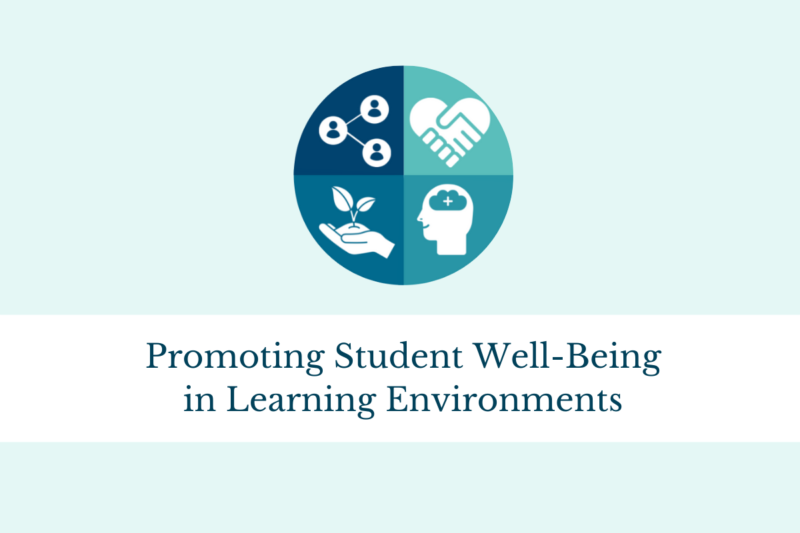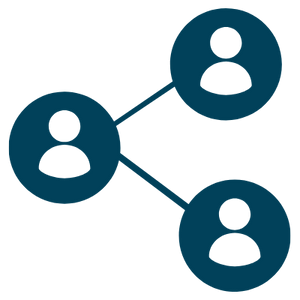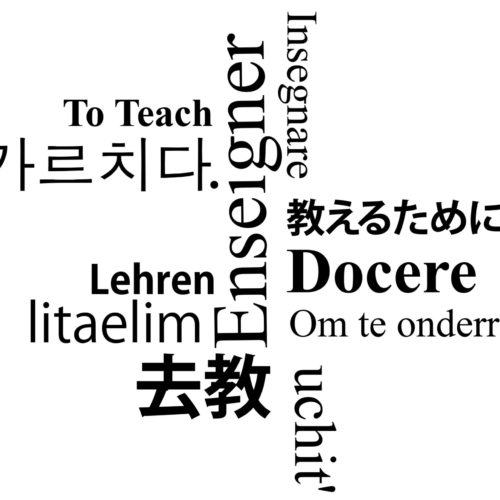
Faculty Spotlights: Social Connection
WashU faculty share strategies for fostering social connection with students.
 In the CTL’s new guidebook for instructors, Promoting Student Well-Being in Learning Environments, one of the keys to well-being that we highlight is Social Connection. We encourage faculty to build a welcoming environment by creating opportunities for students to connect with both their instructor and their peers.
In the CTL’s new guidebook for instructors, Promoting Student Well-Being in Learning Environments, one of the keys to well-being that we highlight is Social Connection. We encourage faculty to build a welcoming environment by creating opportunities for students to connect with both their instructor and their peers.
We spoke with three WashU instructors about how they help to create social connection in their classes.
Jonathan Peelle
Associate Professor of Otolaryngology
How do you provide opportunities for students to connect with you?
“In large courses, it’s hard to get a lot of one-on-one face time with students. So one of my favorite things is to have a selfie introduction, which I set up in our course Slack. It’s optional, but students can post a picture and introduce themselves to me and their classmates. I really appreciate getting to see a little of their personalities. And later on if a student wants to meet with me, I’ll look them up beforehand as a point of reference so they’re more than just a name.
Another thing that I do is share stories from my life outside the classroom, often funny stories about my kids or about something I did on the weekend—things that they don’t always think about their professors doing. I like being able to be authentic with them outside of just the course material.”
How do you provide opportunities for students to connect with each other?
“I have reading assignments in Perusall so that students can have small group discussions even in a class of 200. It also helps incentivize them to do the reading and come prepared to class without requiring me to do a lot of grading. The students are in groups of 20 and can see what each other are highlighting or commenting about in the reading, and they can respond back and forth to each other. I’ve had students bring this back into class sometimes, they’ll make comments like, ‘In my Perusall group, we were talking about…’ So I think they do get this sense of collaboration and discussion.”
Why is it important to you to create these opportunities for social connection?
“I want to be as accessible as possible to students who need help. And I don’t want to be intimidating. I think being able to feel like they know me lowers the barriers for coming to ask me a question. I also think that this actually helps me. For instance, if there’s something wrong with the audio in class one day and I need a few minutes to fix it, the students are more willing to be patient because they know me and see me as a real person. It’s nice to feel like they are on my side.”
Jia Luo
Senior Lecturer in Chemistry
How do you provide opportunities for students to connect with you?
“We have informal help sessions—students don’t need to prepare anything or stay the whole time, they can ask questions or just listen to others ask questions. This also provides a place for students to ask questions that aren’t directly about the course. Some students will come up at the end and ask about how to find research opportunities or get advice about classes to take. To promote attendance, in class we explain the purpose and why they are useful. So that gives students a sense of what it’s like and we encourage them to try out all the course resources early on to see what works for them.
I have also participated in a program through the First Year Center called Classroom Connections. You have lunch with a small group of students on the South 40 or Zoom events when we couldn’t meet in person. It’s a nice opportunity outside of the course to connect with students.”
How do you provide opportunities for students to connect with each other?
“In lecture, we have activities using Poll Everywhere and we encourage students to work with each other. I’ll walk around the room during that time and say hello, ask if they have any questions, encourage them to work together. In that process they get to know each other better and have a connection. There are also smaller recitation sessions each week led by graduate assistants where students do problem solving together and some of our recitation sessions use the collaborative learning technique called Process Oriented Guided Inquiry Learning. In addition, there are optional programs where students can participate in student-led study groups.”
Why is it important to you to create these opportunities for social connection?
“Early on in my teaching, I focused more on content development. I thought, ‘If I can explain this concept clearly in this logical manner, then you should be able to understand it.’ But as I’ve learned more, I realized it’s not just about how clear the explanation is, I really need to understand the students, their backgrounds, so that I can use the right analogies or help them to make connections to their experience. So building this social relationship is important for them to be successful in the course and it can also be a motivator to come to class and get interested in the subject.”
Tim Bono
Assistant Dean, Office of the Vice Chancellor for Student Affairs
Lecturer in Psychological & Brain Sciences
How do you provide opportunities for students to connect with you?
“I’ve had a program called Bagels with Bono where once a week, I will pick students at random from the course roster, and we get bagels together. I get to talk with students who otherwise I haven’t had an opportunity to get to know, to learn things about them and for them to get to know things about me. It’s truly informal—there’s no agenda. And each week is different. Some people want to learn more details about a class topic and others want to talk about the best place to get pizza.
It helps me because it reminds me of everything else that is going on in the life of the students. By finding out what they’re learning in other classes I sometimes will find ways to connect the dots during class and that’s been an unexpected thing that has been useful for me and enjoyable. I also get to find out what else is going on in their lives, like if they’re in an acapella group or on the basketball team. I usually start class with very quick announcements and so sometimes I’ll mention an upcoming event students told me about and encourage the class to get out and support each other.
I think it is small gestures like that which let the students know that I care about them as whole people.”
How do you provide opportunities for students to connect with each other?
“I do weekly thought papers. They’re low stakes and I ask questions like ‘Do you think money buys happiness?’ Then I’ll read a few of the responses out during class. And that’s one of my favorite parts of class and I’ve gotten feedback from the students and it’s one of their favorite parts too. I think that there’s just a sense of connection hearing how other people are taking this material and applying it.”
Click here to learn more about these thought paper assignments.
Why is it important to you to create these opportunities for social connection?
“I think that the reason I love teaching is specifically to have connection with students. I mean, I do find the material fascinating, but part of the fun is knowing how the students are using the information, how it’s changed the way they think about the world. And when you’re having informal conversations with students and you’re getting that feedback, it makes the material so much more fun and rewarding and valuable.”




